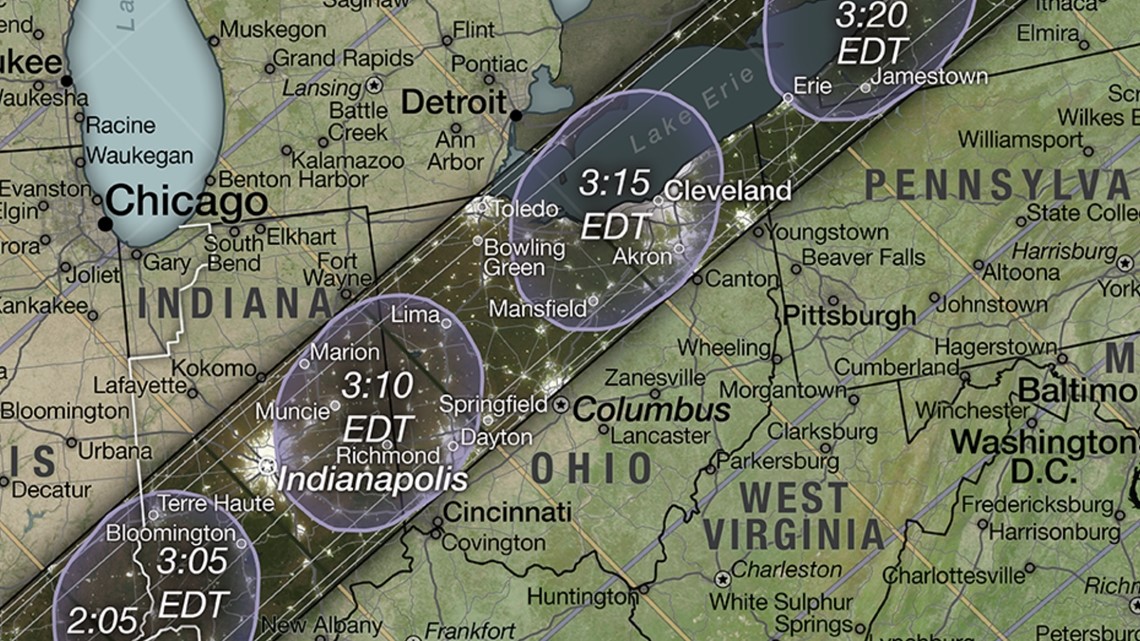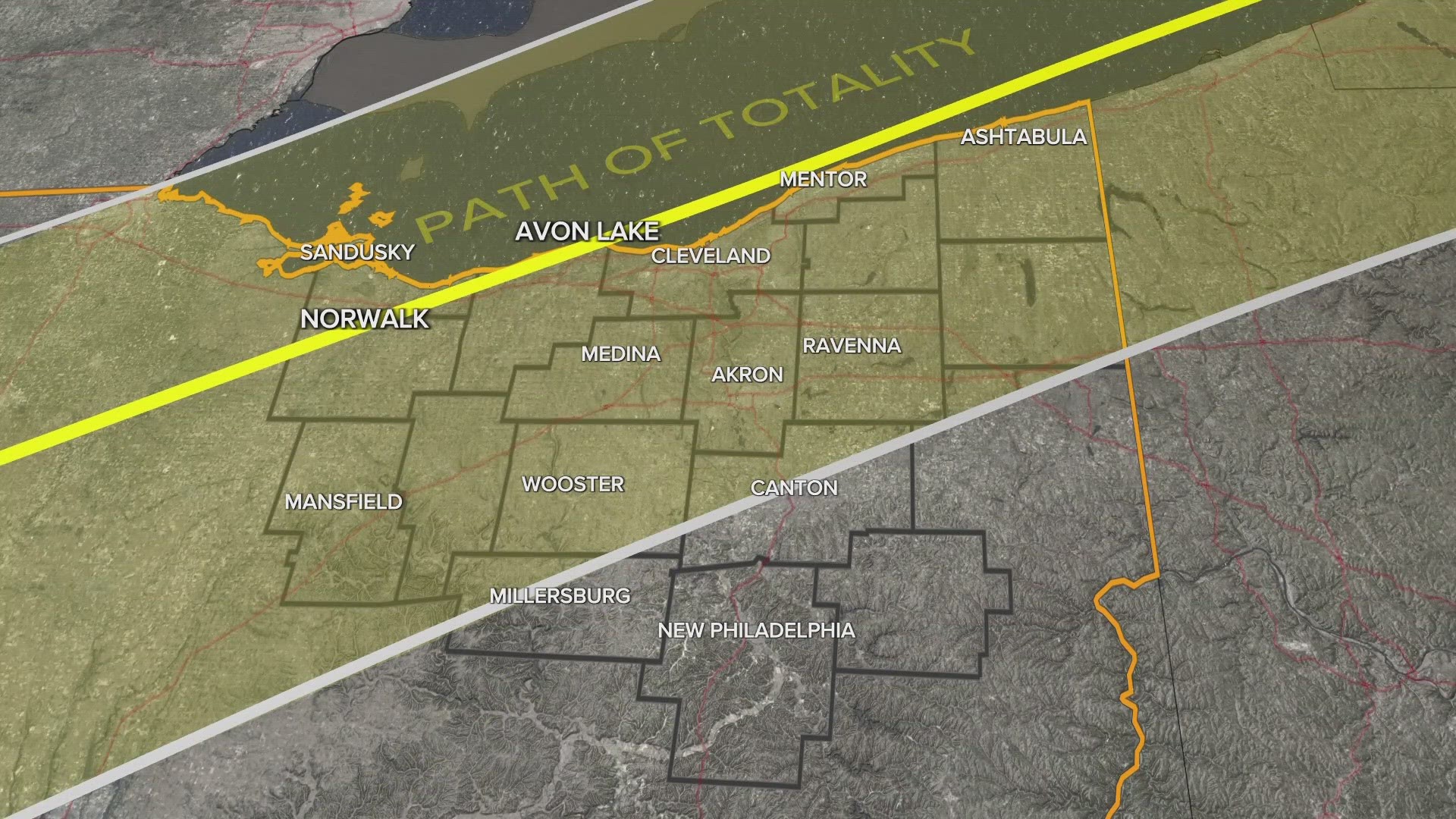CLEVELAND — The excitement is building as Ohio awaits the moment the 2024 total solar eclipse moves through the state on Monday, April 8.
While the path of totality -- where the moon fully covers the sun -- includes plenty of locations throughout Northeast Ohio, your specific location actually makes a difference in how long everything lasts.
EXPANDED COVERAGE: Total solar eclipse
So which places in Ohio will spend the longest time in totality during the eclipse? Turns out, Cleveland is one of the best places to be as the total eclipse will last nearly four minutes.
Why? Because it’s close to the center line in the path of totality.
To give some context about the difference in totality time based on your location, let’s take a look at those who will be in Akron during the eclipse. While in the direct path, Akron will experience approximately one less minute in totality.
Here’s a list of locations throughout Ohio that are among the spots with the longest time in totality (in minutes), according to the National Solar Observatory and Eclipse2024.org:
- Forest, Ohio - 3:56
- Upper Sandusky, Ohio - 3:55
- Amherst, Ohio - 3:54
- Norwalk, Ohio - 3:54
- Avon Lake, Ohio - 3:53
- Tiffin, Ohio - 3:52
- Cleveland, Ohio - 3:49
- Findlay, Ohio - 3:44
Just because you don't see your community listed above doesn't mean your area will have a dramatically shorter eclipse time. The image below shows the path of totality in Ohio. The more centralized you are within the path, the longer you will experience totality.


"Downtown Canton is right on the edge of the path, and the Football Hall of Fame is just barely outside," according to Eclipse2024.org. "Alliance and Youngstown are likewise not going to see totality on eclipse day, so please make your way as far north as you can! The entire Lake Erie coastline (including Ashtabula), all the way up to the Pennsylvania border will be great -- weather permitting!"
WHAT TIME IS THE ECLIPSE IN CLEVELAND?
NASA outlines the eclipse timeframe in Cleveland as follows:
- Partial eclipse begins: 1:59 p.m.
- Totality begins: 3:13 p.m.
- Maximum totality: 3:15 p.m.
- Totality ends: 3:17 p.m.
- Partial eclipse ends: 4:29 p.m.
Other states in the path of totality include Texas, Oklahoma, Arkansas, Missouri, Illinois, Kentucky, Indiana, Pennsylvania, New York, Vermont, New Hampshire and Maine. Portions of Canada will also be treated to the total eclipse.
LOOKING BACK AT THE ECLIPSE OF 2017
While Northeast Ohio wasn't in the path of totality during the Aug. 21 eclipse back in 2017, our region was treated to a partial eclipse. 3News' Betsy Kling, however, traveled to Missouri where she was able to experience totality -- and her reaction was priceless. You can watch that moment in the video below...

